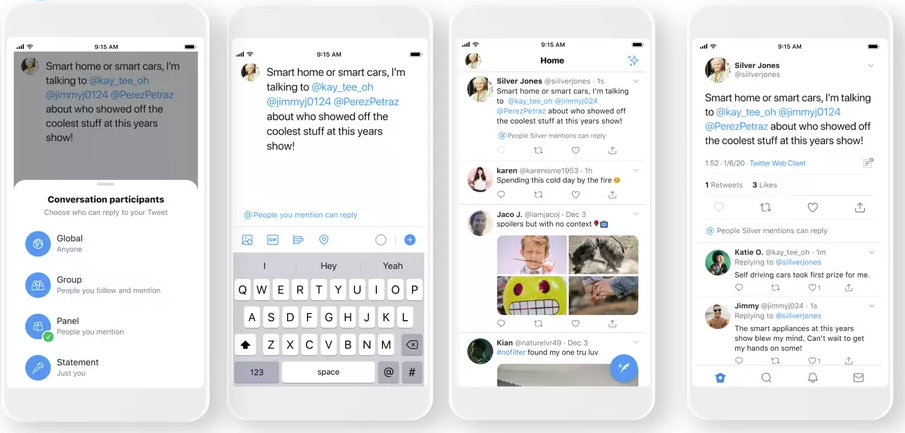SOCIAL
Twitter Provides a First Look at Coming Feature Which Will Enable Users to Limit Who Can Reply to their Tweets

In October last year, as part of an interview with The Verge, Twitter’s head of product Kayvon Beykpour noted that he and his team were investigating the potential of a new capability which would enable users to restrict the audiences of their tweets.
As part of a broader discussion about the rise of ephemeral messaging, and its potential for Twitter, Beykpour, noted that:
“I’m very interested in exploring how we might give customers more control. Where ephemerality is just one of those dimensions, I think there are other dimensions that, while we can get excited and talk about ephemerality because there’s lots of other standards of how other apps do this, I think other dimensions, like control around who can see or control around who can participate, is really critical.”
Twitter has now moved a step closer to making this a reality – during a presentation at CES this week, Twitter’s director of product management Suzanne Xie showed this image of a new process in development which would enable Twitter users to define the audience for each of their tweets, direct from the composer window.

As you can see in the first screenshot above, the new option – at least as its currently constructed in testing – would provide the user with four different audience settings.
Those settings are:
- Global – Anyone can reply to the tweet
- Group – Only people you follow or mention would be able to reply
- Panel – Only people you directly mention within the tweet text itself would be able to reply
- Statement – No tweet replies would be allowed
The new process, which is set to be rolled out later this year, could have a range of potential use-cases. Initially, in Beykpour’s original discussion of the functionality, he noted that live chats were often difficult via tweet, and defining who was allowed to reply might help.
“It’s actually quite difficult to have a fireside chat when you have a billion people screaming into your ear. Like imagine we had tens of thousands of people in the studio with us right now, talking into our ear while we were talking to each other.”
With this update, if you were to limit the respondents to only those who were tagged in the discussion, Twitter would be able to facilitate interview-style discussions, which could be great for hosting live chats, or even major celebrity interviews, which are often flooded with spam on dedicated hashtags.
Those hosting Twitter chats could also use the new audience restrictions as a vehicle to boost their overall following – if you want to participate in the chat, the host could limit chat replies to only those who follow them. You could even separate part of a Twitter chat to an interview-style approach, only allowing the tagged interviewee to reply to the first few tweets, before opening it up to all participants in the second half.
In some ways, this goes against the broader ‘public square’ ethos of Twitter, in which everyone gets a say. But as Beykpour notes, at times, it would be easier to facilitate and follow along with a Twitter discussion if the secondary noise could be toned down a little bit.
The tool will also have clear benefits for those suffering from cyberbullying or other forms of abuse – with the capacity to limit your replies to only those you choose, you could keep out unwelcome remarks, while you could also share your thoughts without concern for direct recourse via the ‘Statement’ option.
Of course, people could still tag you in their own tweets, as opposed to replying to that one specifically, but more control is likely better in this respect.
But then again, more control could also lead to more abuse.
This feature is great for people who face harassment, but it’s going to allow people to speak authoritatively without any pushback whatsoever.
The word of the tweet that gets the most RTs will become the uncritical truth.
The unintended consequences of this will be enormous.
— Dennis Mersereau (@wxdam) January 8, 2020
Various Twitter users have noted that the capability to limit who can reply to a tweet will also mean that people can lessen the exposure of those who disagree with their views. Brands could water down criticism by choosing respondents who are more likely to be positive, while political leaders could quiet dissent, giving a false perspective on a statement’s popularity.
Twitter says that it’s looking into these potential misuse cases (for example, Twitter says that allowing quote tweets would still enable people to share their views, even if they can’t do so directly in the replies), but it could be an unintended, and problematic consequence of this update.
How much of a problem that might be, we won’t know till it’s implemented. Twitter says that it plans to begin testing of the audience restriction options in the first quarter of 2020, with a small subset of users.
We’ll keep you updated on any progress.
